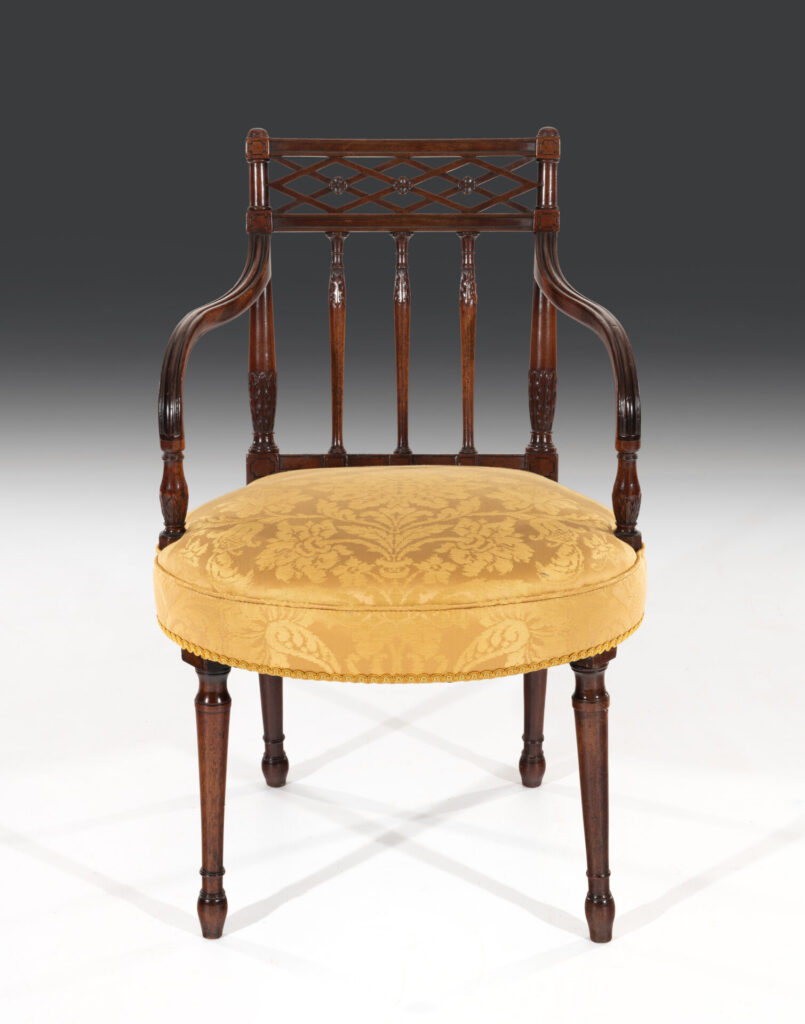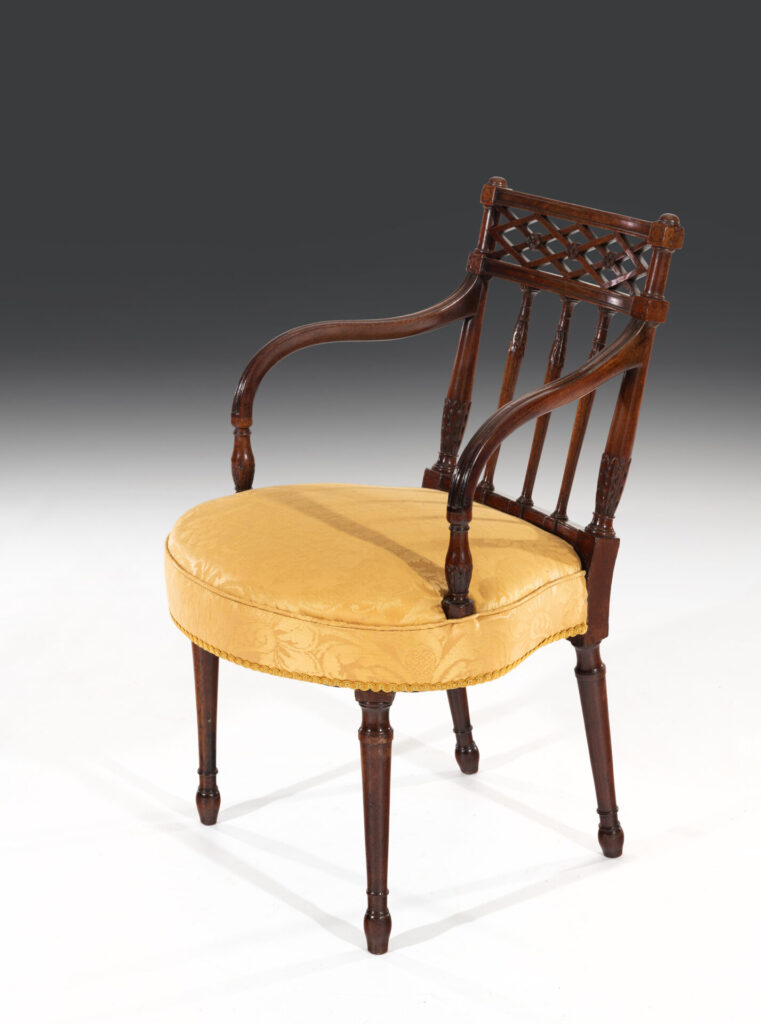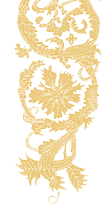Thomas Sheraton Period Chair


Thomas Sheraton Period Chair
English
circa 1775 - 1785
George III 18th century mahogany armchair after Thomas Sheraton designs.
The Chinese style lattice work to the top rail is decorated with floral motifs and flanked with architectural columns above the out-swept reeded arms. The lattice work is supported on three carved and tapered columns that start and finish on turned socles. All the upright supports to the chair back are carved with acanthus leaf decoration.
The compass circular front seat has recently been recovered in Gainsborough silk fabric above four identical solid mahogany carved and tapered legs that terminate on shaped feet.
THOMAS SHERATON (1751 -1806)
Of all the English craftsmen and masters of design and applied art, Thomas Sheraton was one of the most interesting in terms of character. His death, at the beginning of the nineteenth century, marked the end of the Golden Age of English cabinet-making. He was the last, but by no means the least, of the creators of English styles. His fame as a cabinet-maker and furniture designer ranks next to that of Thomas Chippendale, and those who believe that he was Chippendale's superior, are able to support their contentions with sound argument. Thomas Sheraton was a genius, if there ever was one.
Sheraton was born in humble circumstances at Stockton-on-Tees in 1751. He was a country lad who somehow managed to pick up a fair but unbalanced education. He never received adequate specialised training. He taught himself drawing and geometry, and was probably apprenticed to some local cabinet-maker. In early life he referred to himself as a mechanic, with small advantages of academic education.
Little is known of his work until he went to London around 1790, when he was nearly forty years old. He was just a journeyman cabinet-maker and Baptist preacher. All his life religion played an important part in his affairs. He was a strange blend of mechanic, inventor, artist, mystic, and religious controversialist.
In London he opened a shop in Soho. He was not a good business man, and he never achieved the commercial success of Chippendale or Hepplewhite. In fact, his output was very small. It is doubtful if he ever executed many of his most cherished designs, and it is probable that most of the furniture attributed to him was built by others after the drawings in his books.
After 1793 he practically gave up the cabinet-making business and became a designer and a publisher of books. It is upon these that his fame chiefly rests, though there is evidence to prove that he was himself a workman of rare gifts.
His first essay in the publishing field was a series of eighty-four designs, not dated, and now very rare, his ‘Drawing Book’, appearing in 1791, in quarto form, with 111 plates. An ‘Accompaniment’ and ‘Appendix’ were published during the following two years. A second edition appeared in parts from 1793 to 1796, with 119 plates, and a third edition in 1802, with 122 plates. In 1803 his ‘Dictionary’ appeared, and in 1804-7 his ‘Encyclopaedia’, in 125 parts, of which he lived to publish only thirty. There was also a posthumous volume by him, published in 1812, made up chiefly of plates from the ‘Dictionary’ and ‘Encyclopaedia, and called ‘Designs for Household Furniture.
These books were all published by subscription, and none of them made any money for their author, who wrote: "I can assure the reader though I am thus employed in racking my invention to design fine and pleasing cabinet-work, I can be well content to sit upon a wooden-bottom chair, provided I can but have common food and raiment wherewith to pass through life in peace". A brave spirit, truly, though possibly not an entirely satisfactory husband and father.
He therefore sadly died a poor man, his latter days embittered by chagrin at his own ill success and at the better luck of rivals whom he knew to be less competent. Overwhelmed by the wave of bad taste that had at last set in, worn out with overwork and disappointment, in a dingy street, over a poor little shop, he died on October 22, 1806, the last and one of the greatest of the masters. And with him passed the glory of the Georgian era.
Sheraton lived in an age when the aristocracy bought lavishly of luxuries, but made little of obscure genius. Hence, his style became popular while the man remained unappreciated. His fame is chiefly posthumous.
He had a remarkable sense of style, and the designs show lightness and great elegance. Characterised by classical proportions and slim, straight tapered legs that replaced the heavier cabriole legs of the mid 18th century. His furniture featured the use of exotic hardwoods such as Satinwood, Rosewood and Ebony. Common marquetry motifs include drapery swags, ribbons, fans, and urns, but all restrained and elegant. Particularly popular were the inlaid oval panels.
His influence as a designer was huge – over 700 cabinet-makers bought ‘The Drawing Book’ and his designs were adopted by makers throughout the Regency period.
Condition
Excellent and has been recently been recovered.
Dimensions
Height 84.00cm (33.07 inches)
Width 56.00cm (22.05 inches)
Depth 45.50cm (17.91 inches)
Stock No: 11468
Sold


